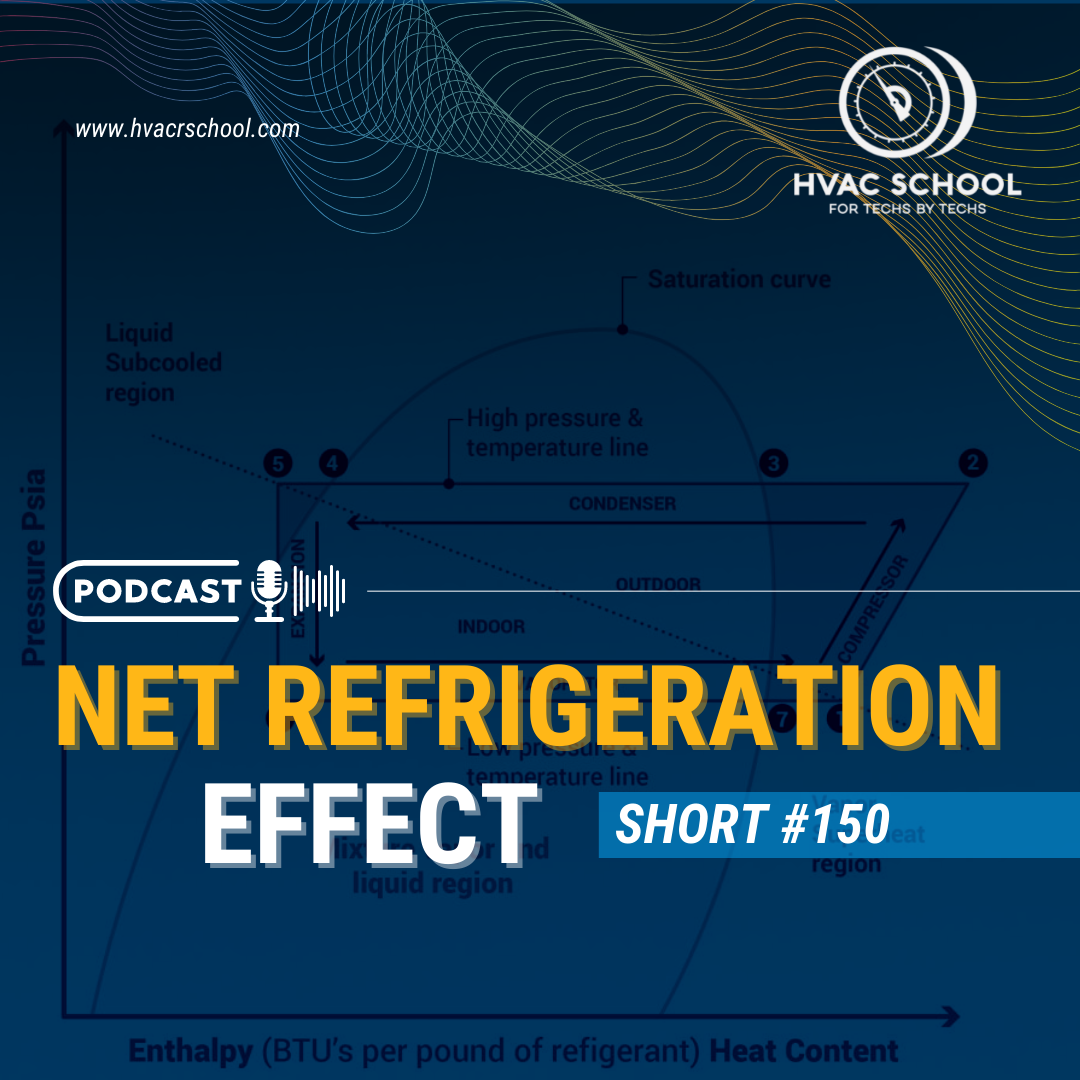Net Refrigeration Effect – Short #150

In this short podcast, Bryan explains what the net refrigeration effect (NRE) is and how it affects HVAC systems.
The net refrigeration effect (NRE) is what happens in the evaporator coil. The evaporator is the heat absorber; as air passes over the coil, the cooler refrigerant within the evaporator absorbs that heat and boils. The NRE is the net energy change that occurs during that process. You can plot the NRE on a pressure-enthalpy chart.
When air moves over the evaporator coil, there is a change in enthalpy or BTUs per pound in the refrigerant (usually called delta h). There should be more BTUs per pound in refrigerant exiting the coil than when it went in. We have to know how many pounds of refrigerant we’re circulating (mass flow rate) and how many BTUs are in those pounds.
Many of those BTUs come from latent heat transfer, which happens when the refrigerant boils. When refrigerant undergoes a phase change, it remains at a constant temperature (sensible heat), but it continues absorbing heat. The heat absorbed contributes to the phase change, and that’s latent heat. Most of the NRE deals with those latent BTUs. (Note: this does NOT refer to latent heat loads.)
In addition to the boiling or saturation phase, we also have to consider BTU changes when refrigerant flashes off at the beginning of the evaporator coil and heat obtained during the superheating phase at the top of the coil. We can maximize our NRE by running a cold evaporator coil (without freezing) and ensuring the evaporator is full of boiling refrigerant. BTUs absorbed in the suction line do NOT count towards the NRE, as they don’t contribute to cooling spaces or refrigerated boxes.
Check out Eugene Silberstein’s book, Pressure Enthalpy Without Tears, at https://escogroup.org/shop/itemdetail.aspx?ID=1445.
If you have an iPhone, subscribe to the podcast HERE, and if you have an Android phone, subscribe HERE.
Check out our handy calculators HERE.
Author:









Comments
To leave a comment, you need to log in.
Log In